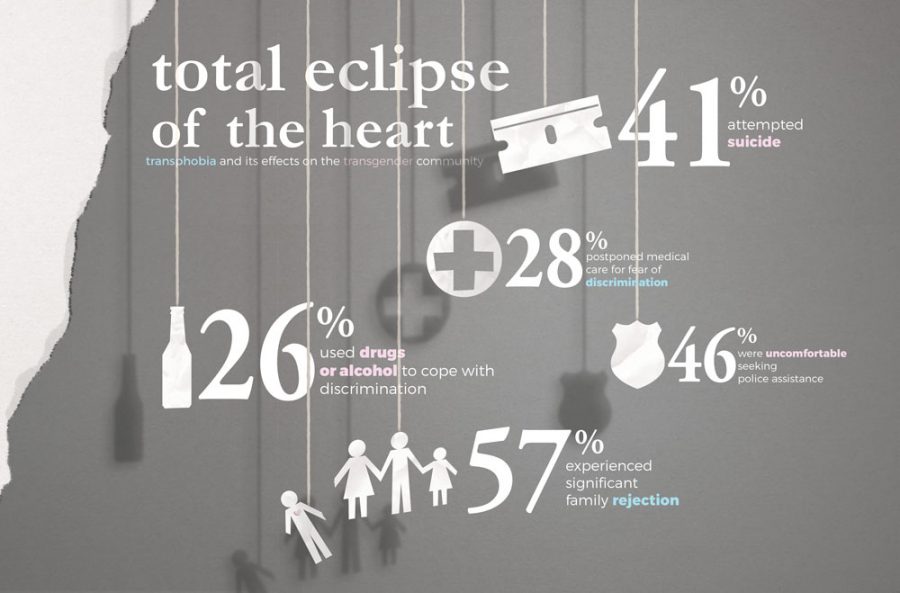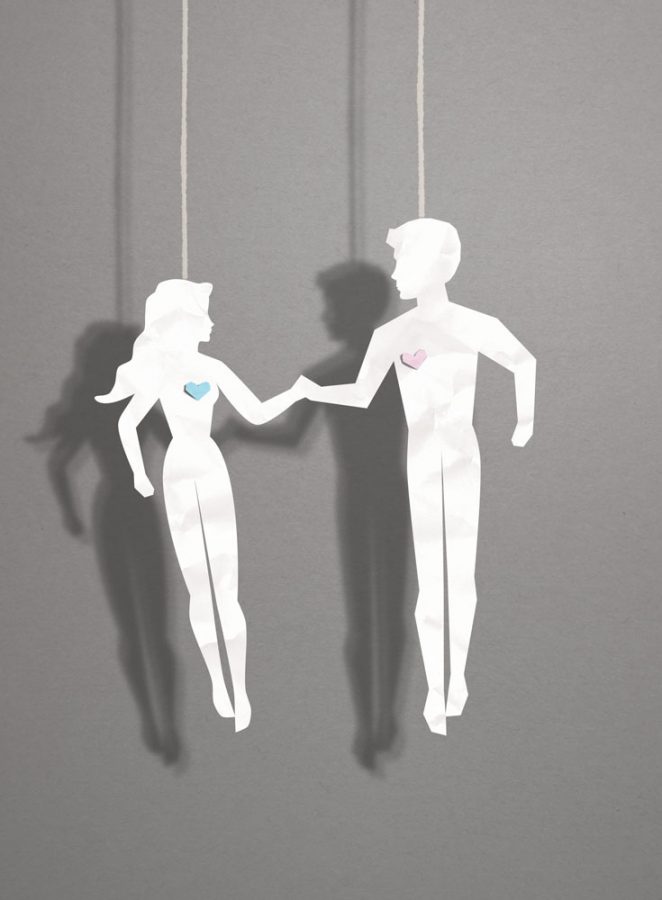Transgression
The stonewall riots were a series of random, violent demonstrations by members of the gay community in response to police raids of gay hangouts in Greenwich, New York, in 1969. People consider them the most important event leading to the current fight for LGBTQ rights, according to pbs.org.
These riots, according to pbs.org, signified the first steps in assuring the rights of all LGBTQ members, including transgender people. However as the years have passed, society has seen the further degradation of trans people.
According to transrespect-transphobia.org, 1,509 transgender people were killed in 2014 just for being who they are. The transgender community is one of the most vulnerable groups in the country, according to a recent report by The Movement Advancement Project. With higher rates of poverty, sexual assault, risk of violence, discrimination and suicide, the trans community is the subject of intense persecution.
With the recent emergence of transgender celebrities such as Laverne Cox, and in particular Caitlyn Jenner, the trans community is experiencing a media spotlight it’s been deprived of since the beginning of the movement.
Jenner, formerly Bruce Jenner, an Olympic athlete and father to the reality star Kardashian family, came out in April of 2015 as a transgender woman. To add to the amount of Jenner’s media attention, the ESPYs awarded her the Arthur Ashe Courage Award. She also aired her new documentary series, “I am Cait,” on July 26.
While the transgender community has applauded Jenner, she has met significant backlash. Senior Patch Robinson, a transgender male, has expressed his distaste toward the media spotlight focusing solely on Caitlyn Jenner in terms of the transgender movement.
“It isn’t really an accurate representation because most people aren’t going to be supported when they come out as transgender. I feel like towards the beginning it was more accurate when so many people hated her, but most people still won’t receive an overwhelming amount of support as time goes on,” Robinson said. “I try to stay away from all her coverage because it just really makes me mad because that’s not how it really is. It’s not all puppies and kittens and rainbows. It’s really hard. It’s not nearly as easy as it may seem.”
Robinson said there are so many more technicalities that cisgender people take for granted. He has to worry about changing his name and maybe even surgery when he’s older. The cost of those things, not to mention the actual emotions that are involved, are a lot to go through. He is very irritated from what he perceives as people only focusing on the good.
“That anxiety and depression that I and so many other transgender people go through is what is not being represented,” Robinson said. “People like to say they were sad but now they’re happy, and it’s all okay. They don’t talk about how so many transgender kids kill themselves just because they are transgender.”
According to yspp.org, more than 50 percent of transgender teens will have had at least one suicide attempt by their 20th birthday. Robinson said Jenner’s overwhelming presence in the transgender movement overshadowed those often occurring tragedies. However, some view Jenner’s presence as a benefit to the transgender movement.

source: National Transgender Discrimination Survey
University of Missouri professor on queer studies, Dr. Elisa Glick, agreed with Kirchhofer’s assessment of Jenner bringing attention to a movement that really needs it.
“Without a doubt, Caitlyn Jenner’s story has helped to raise awareness about transgender issues. A single person cannot be asked to be an ‘accurate representation’ of an entire community. Caitlyn Jenner is a white celebrity, Republican, Olympic athlete and TV personality with an estimated net worth of $100 million, who also happens to be transgender,” Dr. Glick said. “Obviously, she does not face the same issues as the vast majority of the transgender community. Nonetheless, I have been impressed by the way she has used her reality TV series, ‘I Am Cait’, to bring a range of trans issues, voices, and stories to the public’s attention.”
Dr. Glick acknowledges a lack of representation of all transgender people regardless of race, economic status or gender.
“We are in a state of emergency for the transgender community. At least 17 transgender women have been killed this year alone. This violence disproportionately affects trans women of color, especially African American transgender women. What are we as a nation doing about this,” Dr. Glick said. “Certainly there is a problem when Caitlyn Jenner receives so much media attention and black transgender women, who face appalling discrimination and violence, are dying and the fact is most Americans don’t even know their names.”
The homicides Dr. Glick speaks of make up the increasing rate at which people have murdered transgender women of color this year in the United States. These deaths hold great significance over the trans community, according to socialistworker.org. They report that the police in most of these murders refused to identify these women by their preferred name and gender and refused to acknowledge that their gender identity had anything to do with their murder.
According to socialistworker.org, this is significant because it points to the lack of respect held for black trans women. This basic refusal to acknowledge the discrimination of trans people, especially black transgender women, reflects the many other systematic, social and legal prejudices aimed at the transgender community.
“Nearly every aspect of public life—from education to housing to access to personal identification—is marred by systematic, legal and open prejudice,” Rachel Cohen, socialworker.org, writer says in article on transgender violence. “These conditions both reflect ideological transphobia and racism, but they also bolster the oppression of other women, people of color, transgender people, workers and poor people.”
However, Robinson believes there is more to it than that. He has hope in the future treatment of transgender people. It all starts with teaching acceptance.
“Just tell kids it’s okay. Kids need to know that this community and being transgender is nothing to be ashamed of,” Robinson said. “I’m not saying we need gender neutral bathrooms immediately, but we need to create and foster an air of acceptance for everyone.”
By Kat Sarafianos




























































































